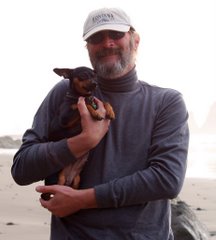Little Left of Littleton
Taken 8/15/2012 in Littleton, West Virginia
We'll rise up early with the sun
To ride the bus while everyone is yawning
And the day is young
in morning Morgantown.
--"Morning, Morgantown," music and lyrics by Joni Mitchell
To hear Joni singing “Morning Morgantown” on Youtube, click here.
Roseland Resort Is actually in southern Marshall County, part of West Virginia’s northern panhandle, and lies north of that fabled line, so to start my day trip, I had to cross the county west to east on narrow mountain roads, reaching U.S. Highway 250 at Bellton. My parents had tales of traveling these roads, but until you experience it yourself, you have no idea what backroad Appalachian driving can be. I left Roseland at 8 a.m. and noted the Saab’s odometer. At 9 a.m., at which point I still had not reached my first planned stop, I looked at the odometer again. In one hour I had driven less than twenty miles—and I only stopped three times to take photos.
As most of my driving would be on U.S. Highway 250 or U.S. Highway 50, I tuned Sirius XM to Fifties on 5, and bopped along with music that I grew up with. (I have to admit that most of the songs they play on Fifties on 5 are songs I think of as ‘60s music, but my memory could be faulty when it comes to time lines. The best song I heard by far was Little Richard singing “I Feel Pretty” from West Side Story. And, no, he didn’t change anything at all. I don’t think that ever before have I heard a man sing that song—not even in drag shows.
I admit to not having studied my map closely, for the first county line I crossed took me from Marshall County into Wetzel County, just as if I were driving down West Virginia Highway 2 along the Ohio River. Wetzel County’s seat is New Martinsville, an Ohio River community where Ron and I go to do our shopping, and have the occasional meal. I hadn’t realized that it stretched the width of the panhandle and beyond. The county line between Marshall and Wetzel counties is that same Mason-Dixon line. Finally I was in the South. ;-)
Driving in a southeasterly direction on 250, I passed the ruins of what had been a very large and very ornate building. The brick ruins reached three stories high and were separated from the roadway by a mere concrete barrier, similar to what Montana uses to separate east bound from west bound lanes on Interstate 90. In other words, there was nothing to protect passing cars from falling bricks. Of course I had to pull off and grab my camera. There was no sign indicating what the building had been, nor any indication on the building itself, unlike its next door neighbor which had an engraved granite block reading 19-Exchange Bank-06. This was what remained of downtown Littleton, West Virginia. Oh there were a few houses, and a couple of shops. There was even a United Methodist Church that I had to photograph. A couple of men standing along the road watched as I stopped, started, turned around, backed up on the highway, in short, I have no doubt they were commenting on every move this stranger made in their small town.
The Hamilton Round Barn, built in 1912, now operating as a museum
Mannington, West Virginia
Crossing into Marion County, I stopped in Mannington to photograph, what else, the Methodist Church. I also captured the Mannington School, St Patrick’s Catholic Church, the Hamilton Round Barn, and a very busy bee visiting a white Rose of Sharon. The Hamilton Round Barn was built originally as a dairy barn, but today is a museum that opens to the public, if I read their sign correctly, only on Sundays between the hours of 1:30 and 4:00 p.m. They probably don’t have a large payroll.
On down the highway, I turned off 250 to photograph the
Barrackville Covered Bridge and quickly found myself in Fairmont, Marion County’s
seat. Those of you who follow my Montana
Counties blog, “Glory of the West,” know that I had to grab the courthouse in
Fairmont. A short side trip north took me to Prickett’s Fort State Park, and
then it was south and east on West Virginia 310 to cross into Taylor County.
One of the cascades in Valley Falls State Park
Near Grafton, West Virginia
One of my photographic goals for Taylor County was Valley Falls State Park, located on the Taylor/Marion County line, where the Tygart Valley River flows over a series of flagstone plateaus. I had directed Nancy to take me there, using the Point of Interest setting on my Nav System, but as I flew by a small sign directing me to turn off 310, Nancy said I had several miles yet to go before reaching the park. I soon found myself in Grafton, Taylor County's seat, and home of the International Mother's Day Shrine, AKA Andrews Methodist Episcopal Church. While in Grafton, I also grabbed the courthouse before following Nancy's directions on to the park. Should I point out that there were highway signs showing the way, but I ignored them in deference to what my Nav System was telling me to do. I time, the route Nancy chose for me turned into a one-lane dirt road, and finally a blocked passage. While Nancy nagged at me to turn right (and presumably drive through the barricades), I parked the car and walked to the edge of the river from where I was able to get a few good views of the falls and the campers happily enjoying the day on the other side of the river. Of course there was no bridge for me to cross.
Asking Nancy to get me to another photographic goal, Tygart Lake State Park, I drove to Pruntyville, Taylor County's original seat, then on to Webster, home of Anna Jarvis who first celebrated Mother's Day and who agitated to get the rest of us to celebrate it as well, and finally into a thick forest, again on a dirt road, with no lake or park in view. I was beginning to distrust Nancy's directions.
Unmarked Church
Arthurdale, West Virginia
Giving up on my goals for Taylor County, I continued east into Preston County. Preston County is unusual in West Virginia in that its northern and eastern borders are straight lines forming a ninety-degree angle. North of Preston County is Pennsylvania (that Mason-Dixon line again), and east is Maryland. Nancy told me to get on the George Washington Highway which it turns out is U.S. 50, which I then left to drive north on West Virginia 92. Nearing Reedsville, I passed a sign for Arthurdale. I didn't know the history of the town, but have since learned that Arthurdale was a New Deal experiment where nearly destitute Appalachian miners and subsistence farmers would be given a new home and five acres of land. The land came from a Mr. Arthur who lost his land to the Federal Government in lieu of paying taxes. This was one of Eleanor Roosevelt's pet projects. There is a fascinating first-person account of moving into Arthurdale in the current (Summer 2012) issue of Goldenseal Magazine.
I continued on to Reedsville, Kingwood (Preston County's seat), Terra Alta where I saw I sign announcing that I was exactly one half mile above sea level--not a big whoop to someone who lives at an even higher elevation and considers 3,000 feet to be low--and Aurora. I was trying to get a view of the highest point in Maryland, which is more easily seen from West Virginia.
Back on the George Washington Highway, I crossed into Maryland, traversing Backbone Mountain at 3,095 feet, and in no time at all I was back in West Virginia, this time in Grant County, western most of the state's eastern panhandle counties. U.S. 50 is only ten miles long in Maryland, but I had reached the easternmost point of my planned day trip and was running out of time. Heading north on Maryland 560, I drove to Oakland, the Garrett County seat, stopping to photograph the courthouse and the old Baltimore & Ohio railroad station. I hoped to get to Swallow Falls State Park, but once again, Nancy failed me, and when I finally did find the park, I felt it was much too late to get out of the car and hike to the falls. Putting my plans on hold until another day, I drove north to Friendsville where I filled the Saab's tank, then west on Interstate 68 back into West Virginia.
I got to Morgantown, seat of Monongalia County and home of West Virginia University, not in the morning, but closer to evening rush hour. This is not a town to be lost in at rush hour. I couldn't find the courthouse, and ended up driving in circles, passing one sidewalk sandwich vendor three times before I was finally able to get out of town. I drove north on Interstate 79, crossing into Pennsylvania's Greene County. At Waynesburg, I left the Interstate to return to narrow mountain roads, crossing back into West Virginia north of the town of Cameron, Marshall County. From here it was just a hop, skip and a jump back to Roseland, a trek that took only forty-five minutes. I arrived back at Ron's trailer at 9:00 p.m., 13 hours and 349 miles after I left. Average speed, including Interstates: 27 mph.
Backbone Mountain, one point of which is the highest place in Maryland
Taken north of Gorman, Maryland









No comments:
Post a Comment